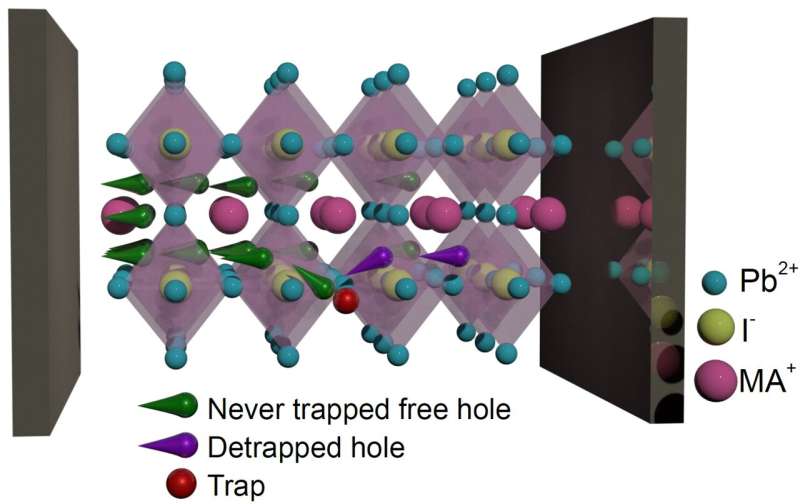Perovskite solar cell defects trap charge carriers and then release them again

Among the most exciting materials for solar cells are the so-called MAPI semiconductors. They consist of organic methylammonium cations and lead iodide octahedra that form a perovskite structure. MAPI based solar cells have achieved efficiencies of 25% within a few years. But so far, the semi-organic semiconductors are still aging rapidly.
Now, for the first time, an HZB team led by Dr. Artem Musiienko has precisely characterized five different defect types and measured the interaction between these defects and the charge carriers.
Using a combination of highly sensitive spectroscopy methods, they succeeded in experimentally determining the concentration, energy, capture cross-section and charge capture time of the different defects and creating a map of the defects. By using electric pulses, they made sure that the measurements did not affect the quality of the material.
The measurement results allow the reliable differentiation between electron and hole transport and the determination of their most important parameters: Mobilities, lifetimes and diffusion lengths. "This work thus provides answers to questions that have been discussed for a long time in the field of perovskite solar cells," says Musiienko.
An important finding: a large proportion of the defects release the captured charge carriers again after a short time. "This may partly explain these particularly high efficiencies of the MAPI perovskites," says Musiienko. These results pave the way to optimize MAPI perovskites in terms of defect concentration, combining high efficiencies with good stability.
The research was published in Advanced Functional Materials.
More information: Artem Musiienko et al, Defects in Hybrid Perovskites: The Secret of Efficient Charge Transport, Advanced Functional Materials (2021). DOI: 10.1002/adfm.202104467


















